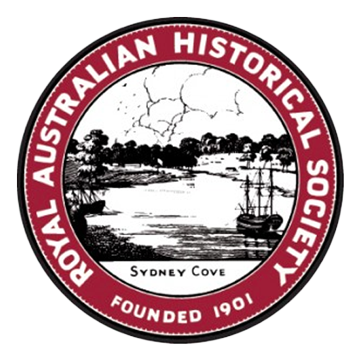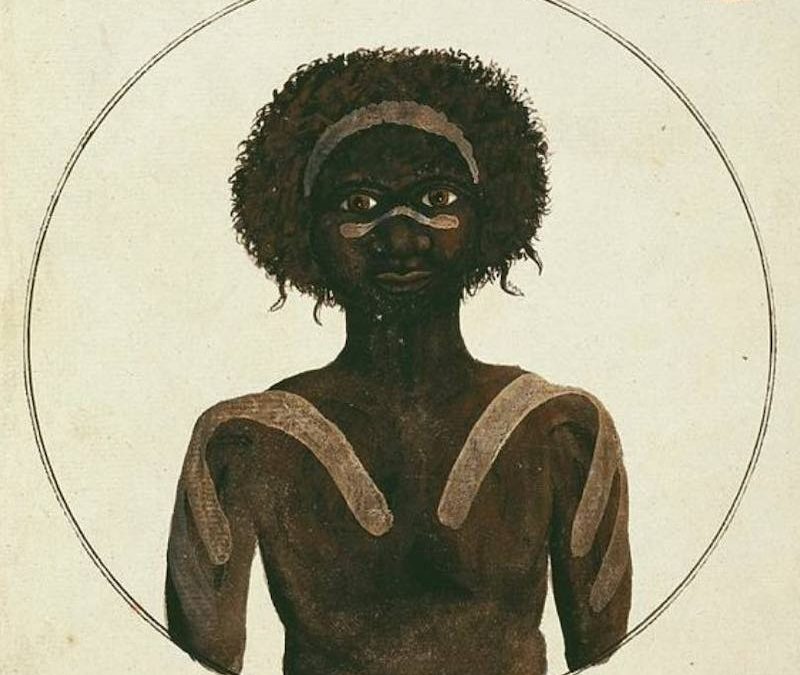


RAHS Subscriptions: Journals – Vol 111 Pt 1 June 2025 ABSTRACTS
RAHS Subscriptions: Journals – Vol 111 Pt 1 June 2025 ABSTRACTS
The spearing of Governor Phillip at Manly
Keith Amos
The spearing of Governor Phillip on a Sydney Harbour beach in 1790 is a significant incident in Australian history. Was it a spur-of-the-moment act, a premeditated ‘payback’, or is there another explanation? Though the incident is factually well known, why it happened has ample scope for further consideration. This paper questions the ritualistic explanations of Governor Phillip’s spearing characteristic of most historical interpretations of the incident since 2001. It concludes that Phillip’s assailant acted defensively of his own volition in the heat of the moment.
John [Milner] Clark 1824–76: The fortunes of a fugitive
Mark St Leon
This article traces the life and career of an identity of early Wagga Wagga, John Clark (1824–76). Held in high esteem throughout the town and district, Clark was a publican, alderman and entrepreneur. Yet, unbeknownst to everyone, including his own family, he was also a fugitive from justice.
Frederick G. G. Rose, the Australian Institute of Aboriginal Studies and academic freedom
Geoffrey Gray
The Australian Government established the Australian Institute of Aboriginal Studies (AIAS) in 1961 and made it permanent through an Act of Parliament in 1964. It was to record and collect the remaining cultural knowledge of Aboriginal and Torres Strait Islander people living a traditional lifestyle in all its aspects: ‘before it was too late’. AIAS had a veneer of academic independence, and so long as it dealt with bona fide researchers and their research projects, their political orientation was not considered. Nevertheless, when confronted with funding a research application by Frederick G. G. Rose, it was the applicant rather than the research project that was problematic. This paper examines Rose’s dealings with the AIAS, the difficulties it faced in supporting academic and political freedom, and pressure from government to deny Rose funding.
Brigadier José Bustamante’s 1796 plan to attack NSW: New documents from the first foreign delegation at Sydney − the Malaspina and Bustamante expedition
Chris G. Maxworthy
In 1788 the King of Spain, Carlos III, authorised an enlightenment voyage by two Captains of the Spanish Royal Navy, Alejandro Malaspina and José de Bustamante y Guerra. This political-scientific expedition took four years. This paper explores the Malaspina-Bustamante expedition, the first official foreign delegation to visit Port Jackson following the arrival of the First Fleet in 1788.
With anticipation of war against Britain, in mid-1796 Bustamante wrote a plan for the defence of Spanish America and Spain’s interests in the Pacific. One part of his plan was the destruction of the Sydney colony with gunboats from Peru, Chile and Montevideo. The inhabitants of Sydney and Norfolk Island would become prisoners of war and be transported to South America. It was hoped that some of these colonial prisoners might populate the Spanish Americas. Bustamante was tasked by senior Spanish ministers to develop his plan.
In parallel with Bustamante’s work was the rapidly expanding British southern whale fishery that had commenced its operations in the Pacific Ocean from 1789. While first a peaceful activity, once war between Britain and Spain commenced then these whalers were also privateers – operating against Spanish colonial ports and shipping.
For Spain the elimination of the colony at Sydney was important for the preservation of Spanish control in the Pacific and the suppression of whaling privateers. This essay describes the Bustamante plan and its aftermath as British interests in the Pacific Ocean transformed what had been a silent backwater before 1788. Additional information on Spanish language sources for a view of Australian history is also explored. This paper should add to the understanding of one European power’s strategic response to the new British colony in the southwest Pacific.
Book Reviews
Lucy Frost, Convict orphans: The heartbreaking stories of the colony’s forgotten children, and those who succeeded against all odds, Allen & Unwin, Sydney, NSW, 2023, 296 pages; ISBN 9781761067686.
Lucas Jordan, The Chipilly Six: Unsung heroes of the Great War, NewSouth Publishing, Sydney, NSW, 2023, xi + 307 pages; ISBN 9781742238098.
Hannah Forsyth, Virtue Capitalists: The rise and fall of the professional class in the Anglophone world, 1870–2008, Cambridge University Press, New York, 2023, xii + 299 pages; ISBN 9781009206488.
David Dufty, Charles Todd’s Magnificent Obsession: The epic race to connect Australia to the world, Allen & Unwin, Sydney, 2024, vii + 354 pages; ISBN 9781761471353.
John Kennedy McLaughlin, The Immigration of Irish Lawyers to Australia in the Nineteenth Century: Causes and Consequences, Alexandria, NSW, The Federation Press, 2024, xxv + 292 pages; ISBN: 9781760024536.
Anne Coote, Knowledge for a Nation: Origins of The Royal Society of New South Wales, Royal Society of New South Wales, Sydney, NSW, 2024, xiii + 304 pages; ISBN 9780645859409.
Robert Cox, Breakout! The Tasmanians who terrorised Victoria, Wakefield Press, Mile End, SA, 2024, xv + 278 pages; ISBN 9781923042728.
Bob Crawshaw, Battle of the Banks: How ad men, barristers and bankers ended Ben Chifley’s boldest plan, Australian Scholarly Publishing, North Melbourne, Vic, 2023, xi + 223 pages; ISBN 9781923267275.
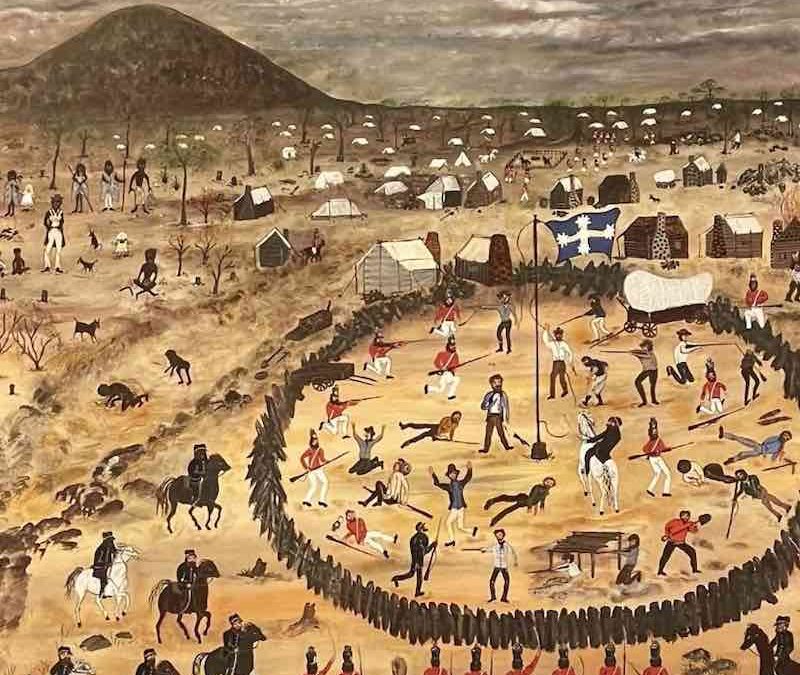
RAHS Subscriptions: Journals – Vol 110 Pt 2 December 2024

RAHS Subscriptions: Journals – Vol 110 Pt 2 Dec 2024 ABSTRACTS
RAHS Subscriptions: Journals – Vol 110 Pt 2 December 2024 ABSTRACTS
Liberty not Licence: The Hyde Park Riots of 1878
Jeff Kildea
In March 1878, two riots occurred in Hyde Park in protest against the anti-Catholic preaching of Pastor Daniel Allen, a Baptist minister who on Sundays held open-air services in the park. In the wake of the riots, mounting public opinion led the government to ban public meetings there. As a result, soap-box orators and open-air preachers relocated to the Domain, where they have continued to operate ever since. This article examines the Hyde Park riots in the context of the need to balance the right of free speech and the right of people not to be subjected to ‘hate speech’.
The News of War: How Australians learned that their nation was at war with Germany in August 1914
Lindsay Close
In August 1914, Australia stood half a world away from the rumblings of war in Europe. In an era before the internet, satellites, television and where telephone and radio were short-range communication devices, how did Australians discover that their nation was at war? This article examines the role that the telegraph played in disseminating the news that the conflict in Europe had started. It will also study the limitations of telegraph technology and the difficulties, such as censorship, print deadlines, ministerial errors and British Foreign Office mistakes that contributed to the delay of the Australian public getting the full and correct story.
A Retrospective of Military Law and Justice in the Australian Imperial Force
Des Lambley
Australian military law was comparatively sophisticated but a complicated dictum boiler-plated during Federation from the British laws. It had evolved throughout the modern history of war with an emphasis on discipline to ensure adherence to orders necessary to accomplish the Army’s given task. The physical environment in World War I and the stresses of the work caused many soldiers to break the rules. It was essential to have a system of laws enabling the offenders to be punished and set an example to others that orders were to be obeyed.
A ‘Nursery of Martial Law’: Proclamations of Martial Law in the Australian Colonies 1790–1853
Ben Hingley
Martial law was declared seven times in pre-Federation Australia, playing a part in some significant historical events. Yet very little has been written on the topic, and no comparative study has so far been made. This paper gathers, for the first time, brief accounts of all of the martial law events in the early colonies into one document and draws some initial comparisons. It will be seen that martial law was an adaptable doctrine. In the years between 1790 and 1853, it was used to fend off starvation, quash two rebellions, overthrow a government, and wage two wars against First Nations peoples.
Interpreting an Image: Did the Collector’s Chests become an embarras des richesses to Governor Macquarie because of their images of Christ Church Newcastle?
Sue Rabbitt Roff
This Interpreting an Image analyses the earliest image of the first Christ Church at Newcastle in 1817. I argue that the Governor, Commandant, Commissioner, Minister for the Colonies, surveyors and a convict forger colluded in circulating exaggerated images of Christ Church’s superstructure to attract investment and immigrants to the newly free settlement of Newcastle. The Macquarie and Dixson Collector’s Chests misrepresented the church’s grandeur. The tower, steeple and spire of the church were largely dismantled due to structural failures.
Book Reviews
Anne Sarzin, The Angel of Kings Cross: The life and times of Dr Fanny Reading, Australian Scholarly Publishing, North Melbourne, Vic, 2023, viii + 357 pages; ISBN 9781922952509.
Hugh Tranter, Southern Signals: Stories of innovation, challenge and triumph in Australia’s communication history, National Library of Australia Publishing, Canberra, ACT, 2023, vii + 280 pages; ISBN 9781922507563.
Rose Ellis, Bee Miles, Australia’s famous bohemian rebel, and the untold story behind the legend, Allen & Unwin, Crows Nest, NSW, 284 pages; ISBN 9781761069130.
John Cary, Frontier Magistrate: The enigmatic Foster Fyans, Australian Scholarly Publishing, North Melbourne, Vic, 2023, ix + 283 pages; ISBN 9781922952639.
Toby Raeburn, The Remarkable Mr and Mrs Johnson: Founders of modern Australia’s first church, schools and charity, and friends of Aboriginal people, 1788–1800, Australian Scholarly Publishing, North Melbourne, Vic, 2023, xv + 311 pages; ISBN 9781922952790.
Cassandra Pybus, A Very Secret Trade: The dark story of gentlemen collectors in Tasmania, Allen & Unwin, Crows Nest, NSW, 2024, xviii + 318 pages; ISBN 9781761066344.
Anna Johnston, The Antipodean Laboratory: Making colonial knowledge, 1770–1870, Cambridge University Press, Cambridge, UK, 2023, xii + 313 pages; ISBN 9781009186902.
Bronwyn Hughes, Lights Everlasting: Australia’s Commemorative Stained Glass from the Boer War to Vietnam, Australian Scholarly Publishing, Melbourne, 2023, viii + 235 pages; 197 illustrations; ISBN 9781922669827.
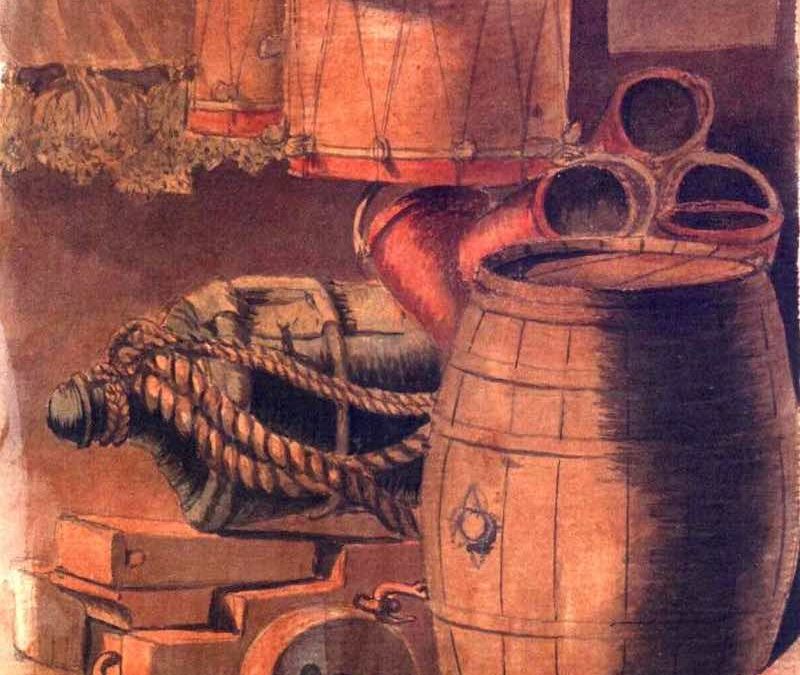
RAHS Subscriptions: Journals – Vol 110 Pt 1 June 2024 ABSTRACTS
RAHS Subscriptions: Journals – Vol 110 Pt 1 June 2024 ABSTRACTS
Lieutenant Charles Jeffreys and the Kangaroo: Was he totally unfit for command?
Ian Dodd
Governor Lachlan Macquarie expressed the opinion that Lieutenant Charles Jeffreys was totally unfit for command of the armed Colonial Brig Kangaroo. Earlier scholarly work has not challenged that opinion. This article examines previously unpublished records, mainly from the British Transport Commission, and some aspects of the voyage to New South Wales to determine whether Macquarie’s harsh opinion was justified.
Railway Navvies and Grog Shops 1878–85: Promoting Law, Order and Sobriety through Crown Land Management
Terry Kass
Riotous drinking and hard physical labour have been synonymous with the labouring workforce who provided the raw muscle for constructing public infrastructure during the nineteenth century. As a highly mobile workforce, navvies were difficult to control and the subject of widespread angst by middle-class observers. During the 1880s, in New South Wales, problems arising from heavy alcohol consumption by railway navvies inspired changes to Crown Lands legislation. Generally focused on managing the leasing and alienation of land, Crown Land administration was not aimed at policing public morality. Yet, the need to control access to alcohol for railway navvies initiated changes in Crown Land policy and administration with that objective.
Ion Idriess in the Torres Strait 1927: Headhunting, mass murder and castaway children
Rob Coutts
The inspiration for this paper was a rare book, Mer – Four Gospels, a translation of the Gospels of Matthew, Mark, Luke and John into the Meriam language of the island of Mer in the Torres Strait. The book was published in 1902, after the introduction of Christianity to the Torres Strait in 1871. However, while researching the provenance of Four Gospels, a different book – Drums of Mer by Ion Idriess – became prominent. Drums of Mer purports to describe the pre-Christian Meriam culture of war, violence and head-hunting. Both books are discussed within the context of the island of Mer.
Stannumville
Leonie Bell
Many people are aware of the canvas and tin shacks that were erected by desperate people on the sandhills of La Perouse and Sans Souci during the throes of the Great Depression in the 1930s. Shanty towns such as these have a long history in Australia, particularly in pioneer and gold-mining towns in Victoria and New South Wales during the Gold Rush. These makeshift settlements often housed men in country areas where both jobs and housing were in short supply and times were tough. However, few will have heard of a NSW State Government scheme to house families in a purpose-built tent town during World War I. Canvas Town, sometimes referred to as Calico Town or Tin Town, and later known as Stannumville, was built 3.5 miles (5.6 km) from Sydney, about a mile south of Daceyville. It was constructed just off the western side of Bunnerong Road, between Gardiners Road and Maroubra Bay Road. Oddly enough, it does not appear on maps of the period, which were either printed before its construction or after its demolition. This made its precise location subject to speculation until the discovery of a hand-drawn addition to an existing Parish Map of Botany. This article examines why the government initiated the project, the living conditions in the town, and the reasons for its demise.
Interpreting an Image: George Augustus Robinson’s Yass to Port Phillip Road, 1840–1844
Bruce Pennay
A crude ink-sketch of Merriman, a Waywurru man, shackled around the neck, handcuffed and being dragged forward over uneven ground by an armed mounted policeman, is a graphic representation of the shortcomings of frontier justice in the early 1840s. This ‘Interpreting an Image’ untangles two stories of frontier justice with which the picture is intertwined in the journals of George Augustus Robinson, the Chief Protector of the Aborigines of the Port Phillip district of New South Wales. In doing so, it explains that the road between Yass and Port Phillip was a key part of a new ‘in-between’ frontier opened with the inland pastoral invasion.
Book Reviews
Bruce Short, Fever: the mysterious medicine from a mystical art to the scourge of the 18th century, North Bank Institute, Bellingen, NSW, 2023, 355 pages; ISBN 9780645773101.
Mark Hearn, The Fin de Siècle Imagination in Australia, 1890–1914, Bloomsbury Academic, London, 2022, 237 pages; ISBN 9781350291393.
Shauna Bostock, Reaching Through Time: finding my family’s stories, Allen & Unwin, Sydney, NSW, 2023, 334 pages; ISBN9781761067983.
Craig Wilcox, Australia’s Tasman Wars – Colonial Australia and Conflict in New Zealand, 1800–1850, Australian Scholarly Publishing, North Melbourne, Vic, 2022, xi + 286 pages; ISBN 9781922669452.
Dr J.M. Bennett AO and Dr John K. McLaughlin AM (eds), Cases for Opinion: A Bicentennial Miscellany, Australian Scholarly Publishing, Melbourne, 2023, viii + 118 pages; ISBN 9781922952998.
Alecia Simmonds, Courting: an intimate history of love and the law, La Trobe University Press, Collingwood, Vic, 2023, 440 pages; ISBN 9781760642143.
David Marr, Killing for Country, Black Inc, Collingwood, 2023; xi + 468 pages; 38 illustrations; ISBN 978760642730.
Phillip Deery, Spies and Sparrows: ASIO and the Cold War, Melbourne University Press, Carlton, Vic, 2022, x + 270 pages; IBSN 9780522878301.

RAHS Subscriptions: Journals – Vol 110 Pt 1 June 2024
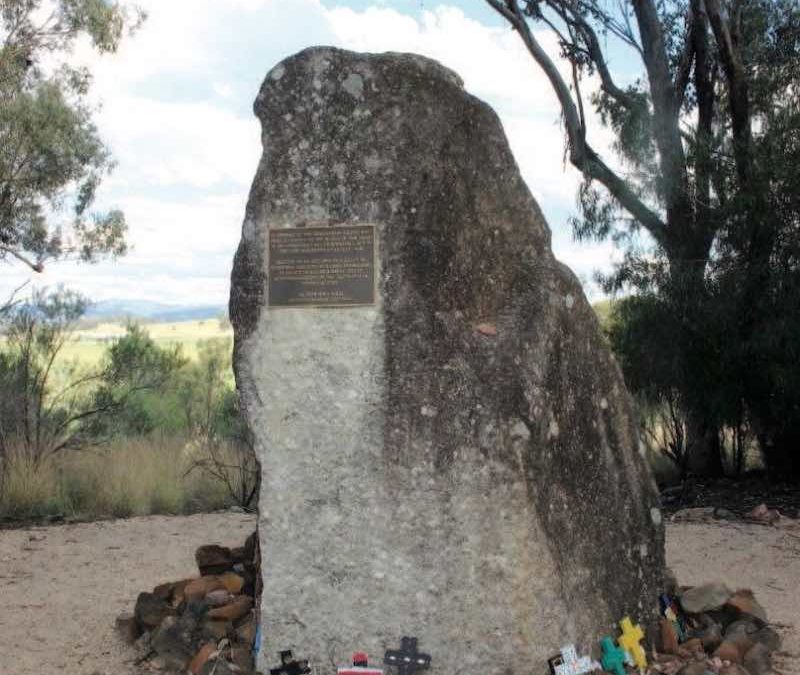
RAHS Subscriptions: Journals – Vol 109 Pt 2 Dec 2023 ABSTRACTS
RAHS Subscriptions: Journals – Vol 109 Pt 2 Dec 2023 ABSTRACTS
Politics versus Justice: A fresh look at the third trial following the Myall Creek massacre of 1838
Jim Ritchie
This article revisits the trials of those accused of taking part in the Myall Creek massacre of 1838, in which at least 28 Wirrayaraay people, mostly women and children, were murdered. It closely examines the third trial, which involved four of those accused who took part in the massacre and explains why they escaped conviction, notwithstanding that seven of their fellow accused had been convicted and hanged following an earlier trial. The article also considers what became of Davey, a young Kamilaroi man, who was to be the main witness for the Crown in the third trial.
Quong Tart’s Neighbours: Cycling around the boundaries of exclusion and racism, 1880s–1900s
Marc Sebastian Rerceretnam
This article will look at the experiences of Mei Quong Tart (1850–1903) after he moved into the affluent Sydney suburb of Ashfield. While much has been written about his successes as a businessman, philanthropist, social advocate and Chinese community representative, there is little research relating to the social obstacles he encountered in his immediate neighbourhood and personal life. In the late 1800s, Sydney’s minority Chinese communities found themselves at the receiving end of political campaigns promoting their exclusion and the curtailing of their rights. In response, the Sydney-based Chinese community instigated campaigns and attempted to counter these negative initiatives. This paper will also look at Quong Tart’s use of popular sport to influence anti-Chinese public opinion in the late 19th century in light of the rise of anti-Chinese sentiment and movements to restrict their immigration and residency.
Angus Mackay and agricultural education in late 19th century New South Wales
Ian D. Rae
Angus Mackay (1830–1910) was a Highland Scot who came to the Australian colonies in the 1860s and spent nearly two decades in Brisbane. Arriving in Sydney in 1881 as an agricultural journalist, he was appointed to the Board of Technical Education and then as an instructor in agriculture at the Sydney Technical College, a position he held until 1897. He wrote books on bees, sugar cane, agricultural chemistry, and guides to agriculture in Australian settings, delivered public lectures and made professional conference presentations, making his career from informal advice to farmers to the inclusion of agricultural education in the state education system.
Chungking Follies: The supporting cast of the Chungking Legation, 1941–42
James Cotton
Sir Frederic Eggleston’s pioneering mission to Chungking (Chongqing) in 1941, accomplishing the opening of diplomatic relations with China, has received considerable scholarly attention. The main cast of characters is well known, Eggleston being assisted by Keith Waller and Charles Lee. This study shows that the contribution of other individuals made a significant impact on the Legation story, though their roles have been either neglected or overlooked. They included a former Shanghai policeman, a habitual criminal and confidence trickster, and a Russian-born linguist and secretary. In particular, in the early days of the mission — under dangerous wartime conditions — the role of Shanghai-born Edmund Burgoyne is shown to have been crucial for its establishment and initial diplomatic achievements. A review of their biographies leads to reassessment of the dynamics of the Legation in its founding phase.
Book Reviews
Ian Hodges, He Belonged to Wagga: The Great War, the AIF and returned soldiers in an Australian country town, Australian Scholarly Publishing, North Melbourne, Vic, 2022, 310 pages; ISBN 9781922669636.
Paul Ashton and Paula Hamilton (eds), The Australian History Industry, Australian Scholarly Publishing, Melbourne, 2022, viii + 361 pages, ISBN 9781922669605.
Jane Carey, Taking to the field: A history of Australian women in science, Monash University Publishing, Clayton, Vic, 2023, viii + 309 pages; ISBN 9781925835410.
Ross McMullin, A Life So Full of Promise; further biographies of Australia’s lost generation, Scribe, Melbourne, 2023, xiv + 626 pages; ISBN 9781922585820.
Ann McGrath, Laura Rademaker and Jakelin Troy (eds), Everywhen: Australia and the language of deep history, NewSouth Publishing, University of New South Wales Press, Sydney, NSW, 2022, x + 311 pages; ISBN 9781742237329.
Meg Foster, Boundary Crossers: The hidden history of Australia’s other bushrangers, NewSouth Publishing, Sydney, NSW, 2022, 256 pages; ISBN 9781742237527.
Angela Wanhalla, Lyndall Ryan and Camille Nurka (eds), Aftermaths: Colonialism, violence and memory in Australia, New Zealand and the Pacific, Otago University Press, Dunedin, New Zealand, 2023, 312 pages; ISBN 9781990048449.
Charles Stitz and Gary Kent, The Country Surgeon: The life and times of Arthur Andrews of Albury (1848–1925), Arcadia/Australian Scholarly Publishing, North Melbourne, 2023; xx + 572 pages; 70 illustrations; ISBN 9781922669834.

RAHS Subscriptions: Journals – Vol 109 Pt 2 December 2023
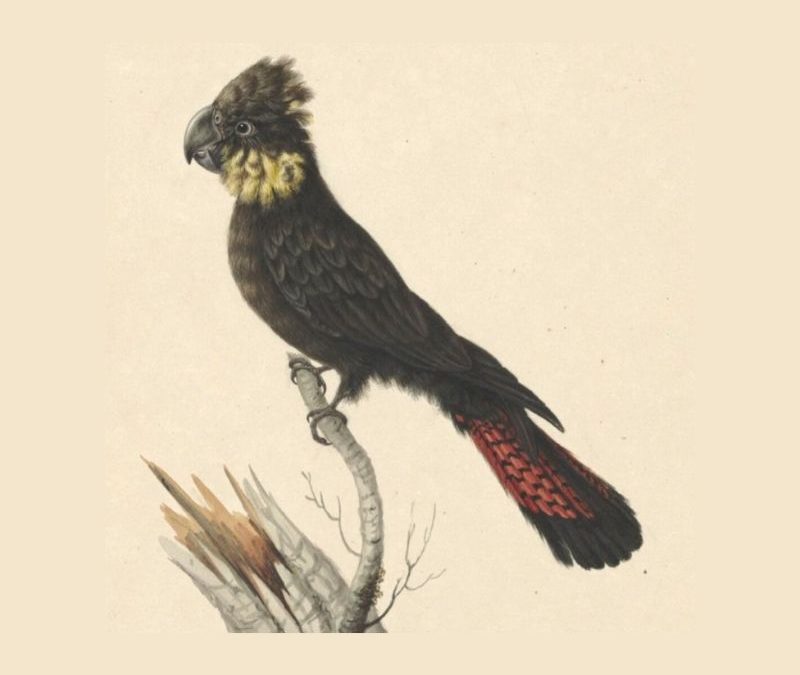
RAHS Subscriptions: Journals – Vol 109 Pt 1 June 2023 ABSTRACTS
RAHS Subscriptions: Journals – Vol 109 Pt 1 June 2023 ABSTRACTS
Touching hands with Anzacs: a re-evaluation of 1920s War Service Homes in NSW
Terry Kass
Australians make pilgrimages to Gallipoli for the dawn service and distant battlefields on Anzac Day or Armistice Day to commune with Anzacs. They often ignore evidence directly associated with Anzacs all around us, in capital cities, suburbs and country towns in the form of dwellings constructed by the War Service Homes Commission in the 1920s. This paper aims to provide a more balanced assessment of the work of the Commission than has been the case to date.
Beaumont & Waller’s Botanical & Zoological Gardens, at the Sir Joseph Banks Hotel, Botany Bay 1848–61
Mark St Leon
In 1848, William Beaumont, with the assistance of his business partner, James Waller, began to transform the gardens and grounds surrounding the Sir Joseph Banks Hotel at Botany Bay into a pleasure resort. The resort, named Beaumont & Waller’s Botanical and Zoological Gardens, would be quickly established as one of Sydney’s favourite outlets for public leisure and recreation. This article outlines its origins and development until its demise in 1861 in the context of early Sydney’s social and civic developments. The article concludes by identifying the resort’s three major legacies.
Ingleside Powder Works: ‘a curious colonial enterprise’
Keith Amos
The mysterious past of Ingleside Powder Works has never been fully explained due to conflicting interpretations about the motives of its 1880s designer and superintendent, Carl von Bieren. What brought him to Australia from the USA, and why did the works fail to produce gunpowder? This article contends the works were ostensibly built to produce explosives, but in reality, to facilitate an affluent lifestyle for the man who purported to be ‘Carl von Bieren’ and his supposed wife, Anna. Evident is a remarkable web of deceit spun by a 19th-century confidence man.
Thomas Wilson Esq and the natural history collections of First Fleet Surgeon John White
Matthew Fishburn
Thomas Wilson Esq, a Londoner, was the driving force behind the publication of three of the most important early Australian books, especially in terms of natural history: First Fleet surgeon John White’s Journal (1790), James Edward Smith’s Botany of New Holland (1793) and George Shaw’s Zoology of New Holland (1794). Although known to have joined the Linnean Society and to have employed the artists Sarah Stone and James Sowerby, Wilson has long been an enigmatic figure. This essay discusses the remarkable breadth of White’s collections on his behalf and reveals that Wilson was, in fact, a wealthy apothecary, not only a patron of White but an important supporter of Matthew Flinders, as well as being tangentially connected to two other surgeons associated with New South Wales, John Lowes and George Bass. Wilson was the central figure in an important professional network that was openly competing with the socially grander and far better-recorded coterie of Sir Joseph Banks.
Book Reviews
Robert Cox, Broken Spear: the untold story of Black Tom Birch, the man who sparked Australia’s bloodiest war, Wakefield Press, Mile End, SA, 2021, xxi + 299 pages; ISBN 9781743058671.
Anthony Webster, The Foundation of Australia’s Capital Cities: Geology, Landscape, and Urban Character, Lexington Books, Maryland, USA, 2022, xii + 327 pages; ISBN 9781498597951.
Heather Goodall, Georges River Blues: Swamps, Mangroves and Resident Action, 1945–1980, ANU Press, World Forest History Series, Canberra, 2022, 305 pages; ISBN 9781760464622.
Brendan Atkins, The Naturalist: the remarkable life of Allan Riverstone McCulloch, NewSouth Publishing, Sydney, 2022, viii + 190 pages; ISBN 9781742237756.
Alan Atkinson, Elizabeth & John: The Macarthurs of Elizabeth Farm, UNSW Press, Sydney, 2022, xi + 500 pages; ISBN 9781742237565.
June Factor, Soldiers and Aliens: Men in the Australian Army’s Employment Companies during World War II, Melbourne University Press, Melbourne, 2022, xvi + 327 pages; ISBN 9780522878585.
Joan Beaumont, Australia’s Great Depression: How a nation shattered by the Great War survived the worst economic crisis it has ever faced, Allen & Unwin, Crows Nest, NSW, 2022, ix + 565 pages; ISBN 9781760293987.
Joel Stephen Birnie, My People’s Songs: How an Indigenous Family Survived Colonial Tasmania, Monash University Publishing, Clayton, Vic, 2022, xxi + 231 pages; ISBN 9781922633187.
Patricia Clarke, Bold Types: how Australia’s first women journalists blazed a trail, National Library of Australia Publishing, Canberra, 2022, xv + 256 pages; ISBN 9781922507372.

RAHS Subscriptions: Journals – Vol 109 Pt 1 June 2023
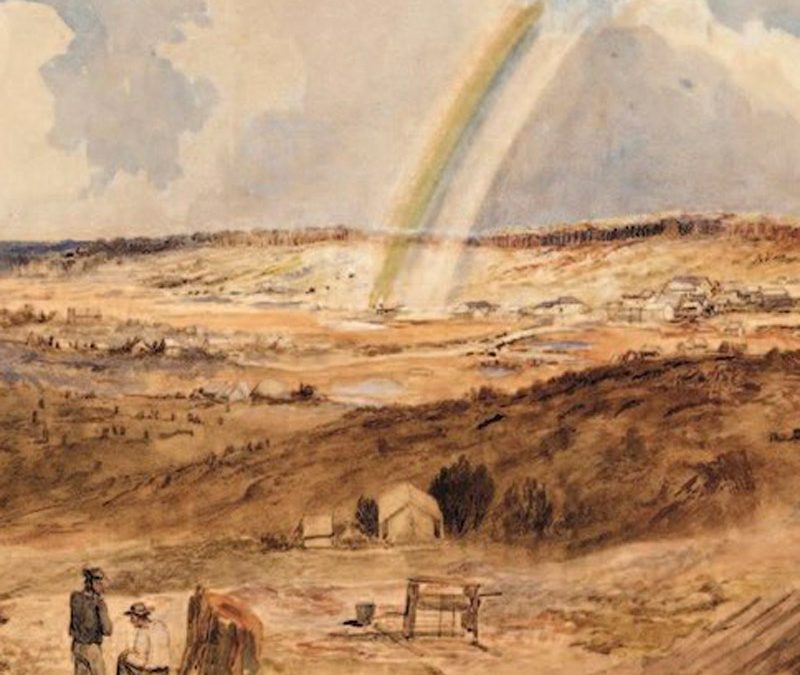
RAHS Subscriptions: Journals – Vol 108 Pt 2 Dec 2022 ABSTRACTS
RAHS Subscriptions: Journals – Vol 108 Pt 2 December 2022 ABSTRACTS
‘Extensive plans of immigration’: Governor Bourke and the beginnings of Australian assisted immigration, 1831-1838
Richard Reid
In that 299-word encomium on the public statue to the colony of New South Wales’ first Irish governor, Sir Richard Bourke, outside the State Library is the claim: ‘He raised the revenue to a vast amount, and, from its surplus, realised extensive plans of immigration.’ At a time when convicts were arriving in Sydney in unprecedented numbers, the reference here is not to the transportation of felons but the early development of that large program of government-assisted immigration, which within virtually ten years, changed the demographics of the colony from one based on convicts, emancipists and their children to one increasingly based on free immigrants. This article examines the extent to which Bourke can be credited with that change.
Bowral and the fraternity of ‘Noble Men’: Freemasonry in Bowral and the Southern Highlands of NSW
Alan Jacobs
Lodge Carnarvon is one of only two lodges that remain in existence in the Southern Highlands of NSW. The history of Lodge Carnarvon in Bowral is examined from its inauguration in 1888. Access to the internal records of Lodge Carnarvon and local newspapers enabled the author to make a detailed study of the membership, including demographics and professional backgrounds. The rise and fall of the membership of Carnarvon is placed within the context of the trajectory of all Freemasons under the United Grand Lodge of NSW. Lodge Carnarvon members exerted a decisive influence on the township of Bowral, but their membership of the fraternity usually was not disclosed or acknowledged. These men constituted the backbone of the business community and local government and helped to build the social capital of Bowral and its surrounds. In 1950 the Mayor (H.F. Venables) referred to one Carnarvon freemason (Joshua Stokes) as one of the Noble Four of Bowral. However, Stokes and the other Freemasons were not identified as members of the fraternity. Twenty-eight years later, the Shire President (Cr. Peter Reynolds) proclaimed that: ‘… members of the Council considered it an honour to accord to Lodge Carnarvon a civic reception in recognition of their support and involvement in the community for 100 years.’
Catholic Action, Sydney style: Catholic lay organisations from friendly societies to the Vice Squad
James Franklin
Sydney Catholics in the mid-twentieth century were organised into a large number of active and effective associations, from parish sodalities and professional guilds up to the Cahill government. Parish-based and larger organisations supplied a body of people accustomed to uniformity of beliefs and coordinated action in support of those beliefs, easily mobilised against Communism and in favour of Catholic moral and political positions. Pragmatic, informed by implicit moral views rather than explicit theory, and clerically controlled, Catholic Action in Sydney proved more able than its Melbourne counterpart in controlling the levers of political power. The Cahill government built on this organisational infrastructure to implement in law and policing a conservative moral agenda.
Protection or Persecution? Victoria’s Chinese Protectors
Rob Coutts
In 1855 the Victorian Colonial Government appointed Chinese Protectors. Taken as a whole, from 1855 to 1863, the Protectorate belied its name, but conversely, it is suggested that the British humanitarian movement influenced its creation and early implementation. A distinction is made between the Protectorate’s administration before and after the 1857 Chinese Residence Act. This Act aimed to charge (only) the Chinese a fee to continue living in Victoria or leave the country. The proposal is that the Protectorate was created and implemented with humanitarian intent until the 1857 Act re-purposed it into an instrument of revenue collection and persecution.
Thief or prostitute? Questioning the evidence against women transported to Australia
Kathrine M. Reynolds & Carol Liston
Accounts of women in Australia during the convict period are dominated by assumptions that many of the convict women had worked as prostitutes in Britain and continued to carry on their trade in the colony. The crimes that led to their transportation are overlooked or are assumed to involve prostitution. This paper investigates British sources about their crimes to understand the extent to which these crimes were associated with prostitution. Many of the women used the promise of sex to lure men into situations where they could be robbed. Building case studies around three convict ships, we trace the women’s crimes in Britain, seeking to determine if those crimes involved acts of prostitution and were the source of their designation as prostitutes.
Book Reviews
Robert Wainwright, Nellie: the life and loves of Dame Nellie Melba, Allen & Unwin, Crows Nest, NSW, 2021, 344 pages; ISBN 9781760878252.
Stuart Macintyre, The Party: The Communist Party of Australia from heyday to reckoning, Allen & Unwin, Crows Nest, 2022, xiv + 498 pages; ISBN 9781760875183.
Julian Casey, et al, Sub Tuum Praesidium: Marist Brothers in Australia 1872–2022, Marist Brothers Australia, Mascot, NSW, 2022, xiv + 563 pages; ISBN 9780646853253.
Jeff McGill, Rachel: Brumby hunter, medicine woman, bushrangers’ ally and troublemaker for good … the remarkable pioneering life of Rachel Kennedy, Allen & Unwin, Sydney, 2022, 324 pages; ISBN 9781760879983.
Jean Fornasiero and John West-Sooby, ‘Roaming Freely Throughout the Universe’: Nicholas Baudin’s voyage to Australia and the pursuit of science, Wakefield Press, Mile End, SA, 2021, 340 pages; ISBN 9781743058275.
Michael Shmith with research by Dr Stella Barber, Merlyn: The life and times of Merlyn Baillieu Myer, Hardie Grant Books, Richmond, Vic, 2021, xiv + 385 pages; ISBN 9781743798096.
Paul van Reyk, True to the Land: A history of food in Australia, Reaktion Books Ltd, London, UK, 2021, 288 pages; ISBN 9781789144062.
Gideon Haigh, The Brilliant Boy: Doc Evatt and the Great Australian Dissent, Scribner Australia, Cammeray, NSW, 384 pages; ISBN 9781760856113.
Anna Clark, Making Australian History, Vintage Books, North Sydney, 2022, xii +417 pages; ISBN 9781760898519.
Ian Hoskins, Australia and the Pacific, a History, NewSouth Publishing, Sydney, 2021, 489 pages; ISBN 9781742235691.

